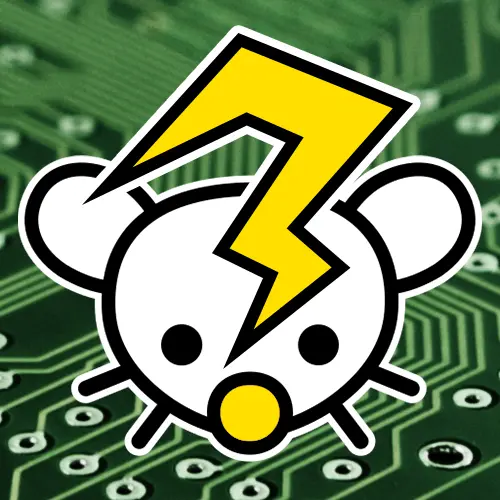Besides putting too many devices on a single wall socket, that draw too much power, what is supposed to happen?
Like say I chain ten dividers and put a single vacuum cleaner at the end. Is that more dangerous than plugging it directly into the wall?
Short answer, it’s actually not.
The actual danger is overloading a socket. This is significantly easier with a chain of extensions.
Resistance on the individual plugs shouldn’t be an actual issue. The only way it might come into play is if you are using a switch mode power supply at the end. This would adjust its current draw to account the reduced voltage. This would increase the current draw at the plug.
E.g. a PSU trying to draw 1000W. At 120V this would be 8.33A. If you drop 30V, then the supply would draw 11.1A. The intermediate plugs would dissipate 333W. You would be drawing 1333W from the wall.
In countries with low AC voltages, and a lack of fused plugs, this could overload a socket and cause a fire.
It’s also worth noting that long extensions have the same issue though it’s less. They also have a far lower rating when coiled than when uncoiled. E.g. I have a 13A extension that can only provide 4A when fully cooled.
They also have a far lower rating when coiled than when uncoiled. E.g. I have a 13A extension that can only provide 4A when fully cooled.
Do yours stop providing amperage when coiled? Or do they just get really hot? Because that’s what happens when you overdraw.
Divisors can be quite dangerous for this reason IF they don’t have a fuse. Some cheap dividers have a switch but don’t actually have a fuse or breaker in them so they can be overloaded and set fires.
That extension cord you mentioned is also a huge problem because you can easily get past 13A from a divider and cause the extension cord to become a liability. Whenever you get long extension cords, especially if they are general use or for high-powered devices, ensure they are rated for 15-20A, 14 or 12 gauge.
Here’s more info from Technology Connections: https://www.youtube.com/watch?v=K_q-xnYRugQ
I’m UK based, so all our plugs are fused. We also work at 240VAC.
As for my extension, it has no limiter on current, other than the 13A fuse. It does have a thermal cutoff built into it’s reel however. It might not be enough to stop the cable getting melty, but it should stop it catching fire. It would require a very high load, for a long time to reach that point however.
As I said, multi adapters aren’t inherently dangerous. They just make it easier to create a dangerous situation, if used inappropriately.
Other commenters have pointed out the problems with overloading of connectors and reduced efficiency because of the added resistance but there is another really important reason not to chain power strips: circuit breakers work best against short circuits when the resistance between the breaker and the short is fairly low (for instance less than 0.5Ω) so that the current will quickly go over the rated current of the breaker. If the resistance is a lot higher because you have too many extensions between the breaker and the fault, the time the breaker needs to react will go up. Counterintuitively this usually means more energy will be turned to heat by the fault.
In extreme cases this can mean the difference between a broken power strip that you can just throw out and a burned down house.
The longer the run with more connections, the greater the voltage drop, the more stress on anything involved.
That means more power usage and higher likelihood of a failure vs directly plugging the same device into the outlet. So it is better to use an extension cord than chained power strips.
It is especially dangerous to have chained power strips that you load up due to fire risk that isn’t necessarily mitigated by the breaker.
It’s complicated. If everything is rated properly, it’s not really an issue, the problem is you can hook a 15A power strip to a 10A or less extension cord that then goes into the wall. The strip will let you plug in 15A worth of equipment but its upstream can only handle 10.
But if you have the right sized extension cords and power strip for your load it’s fine. It’s just, the average person doesn’t really understand the nuances.
I’ve never heard of being able to plug a 15A into a 10A socket. Everywhere I’ve seen them, they are keyed to physically prevent this. What country are you in?
AFAIK in North America we only have 15A and 20A sockets. Don’t know how the standards are in the rest of the world.
In NA, you can plug an extension cord only capable of 5A and it’s still got the same standard 15A plug and socket on it. And that’s where the common fear comes from: it’s very easy in NA to overload an extension or power strip by simply plugging a 12A appliance like a microwave oven on an extension cord rated for 5A that then plugs in a 15A socket in the wall and there’s nothing to save you there, the extension cord will melt, especially if it’s very long.
The UK doesn’t have such a problem because all their plugs have fuses in them, so a 5A extension would have a 5A fuse in the plug, so you’re safe you can’t overload it, it won’t let you.
The EU and Australia probably have sane standards where it’s not allowed to sell undersized extensions, plus they use 240V so most appliances use half the current which makes it less likely to have undersized wires.
In the end it comes down to the availability of accessories that doesn’t prevent you from overloading them. If the whole chain is capable of the full current all the way to the breaker/fuse it’s safe, even if you have a kilometer worth of extensions the breaker won’t let you pull more.
In Australia, for example, the earth pin on a 15A plug is taller than a 10. This lets you plug 10A rated extensions and appliances into a 15A capable socket, but not vice versa.
Amperages above that have dedicated plugs, and any available adaptors only go downwards in amperage limit, not upwards.
This of course doesn’t stop people getting creative with a screwdriver, or from creating immense chains of small gauge extensions, but it certainly goes a long way to reducing risk.
Are you talking about extension cords with multiple outlets at the end?
The wire inside the cord could be of unknown quality - typically these can be either really thin copper wire, or aluminum/steel which are not ideal. The cord can get hot under heavy use, and in a worst case scenario, melt and start a fire.
Too many extension cords chained together can cause the mains voltage available at the end of the cord chain to drop, due to the resistance of the wires adding up.
Each individual plug and socket are potential failure points, and like the cord, the materials used for the socket’s contact pins may be less than ideal. The less of these loose points you have chained in any kind of electrical system, the better. The resistance at these points may also cause the contact pins to get hot under heavy use, causing the plug to loosen over time.
Typically the fuse breaker should cut out and protect the wires before anything dangerous happens - but IMO better safe than sorry.
I might have done a poor job of explaining this… hopefully someone else provides a clearer description
Power dividers are RF components, they divide power (and in reverse they’re power combiners), if you chain 10 power dividers you get around 30dB attenuation. If you want to compensate for that make sure your system can handle more power.
For extension cords with multiple sockets read the other replies.
How does RF attenuation affect power safety?
I think they may be speaking about a different kind of power divider, something to which the name probably fits better
OP is talking about extension cords with multiple outlets/sockets, that’s not a power divider, the connected devices will draw as much power as they need. The fear with that is you might overload the socket, and it could start burning. But that should only happen if the circuit breakers aren’t matched to the wire cross section area, meaning the wires can get too hot.
An actual power divider is something you’ll use in RF systems, it literally divides power, the simplest form would be a T-junction and at the other connectors you only get half the power (obviously), so it appears attenuated by 3dB. Let’s say you feed the system with 0dBm (1mW) and you want 0dBm at each output you need to amplify by 3dB somewhere and make sure your circuits support that. Using multiple power dividers is not uncommon if you want for example to feed multiple antennas with the same signal.
Each connector has a little bit of resistance and thus increases heat. This is compounded by the voltage loss, so each one gets a little bit worst.




